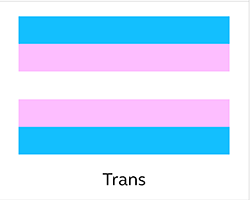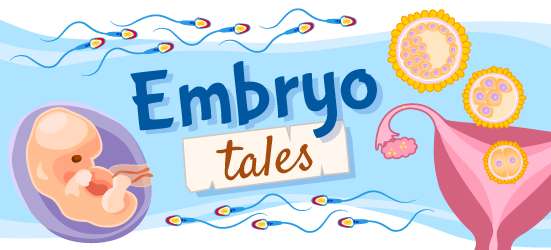
Gender Identities and Expression
Illustrated by: Sabine Deviche
show/hide words to know
Billie has to wear a uniform to school every day, and they hate it! The plaid shorts and polo shirt are so itchy and never fit right. Billie wishes they could wear all their favorite outfits to school instead. They have so many colorful sweaters and fun shoes sitting at home in the closet, wasted.

Lots of students are assigned school uniforms at the start of every year. Some students might like the uniforms, while others might not feel as comfortable wearing them. Gender is kind of similar. Most people are assigned a gender when they are born. Some people are comfortable living with that gender, while others are not. Image by GabbyKawaii07 via Wikimedia Commons
Billie’s friends, Erin and Stevie, like the school uniform. Erin thinks it’s comfortable and looks nice. On the other hand, Stevie doesn’t really like how the uniform looks, but is grateful that they don’t have to pick an outfit every day that others can judge.
Like school uniforms might be assigned at the beginning of a school year, gender gets assigned to us when we are born. Many people are comfortable with what they’re assigned, like how Erin likes the uniform. Other people are less comfortable. Sometimes, the gender we’re given just doesn’t fit right, like Billie’s uniform, and we want to express ourselves in a different way. Like Billie’s wardrobe, many gender identities exist that people can choose to identify with.
But even if we don’t feel comfortable with our assigned gender, we still might not be comfortable expressing that. That’s kind of like how Stevie doesn’t really like the uniform but is glad to have it. Even though many gender identities exist, not everyone feels safe to express theirs.
Gender Identities
Gender refers to categories like woman, man, or gender-diverse. Those categories are social constructs. That means that our societies invented them, instead of them being something that exists in nature. Genders define how a person’s identity relates to how they look, act, or behave. Most people are assigned to be either a boy or a girl at birth. The gender we are assigned is usually based on our biological sex, or whether we have “male” or “female” body parts at birth.

Most people are assigned a biological sex based on the bodies they are born with. But gender is separate from biological sex. Gender is something we learn over time. We learn what it means to be a man, woman, or nonbinary person from family, friends, school, and media. Image by Eliavben via Wikimedia Commons.
But, gender is separate from our bodies and isn’t fixed at birth. Oftentimes, people realize that they don’t identify as a man or woman as they get older. They might adopt a different gender identity, which has to do with the way we feel about our gender on the inside, to reflect that.
Let’s look at a few of the many different gender identities a person can have. People can identify as several of these identities at once, or as none of them.
Cisgender
Cisgender refers to people who are comfortable with the gender they were assigned with at birth. (Many cisgender people may not use that term, though, because they don’t see gender as separate from biological sex).
Transgender
Transgender people are people who are not comfortable with the gender they were assigned at birth. However, transgender is an umbrella term. There are many different ways a person can be transgender.
A lot of people use transgender to refer to people who identify as the opposite gender. They commonly identify as trans women or trans men. Some transgender people may choose to get a gender affirmation surgery. Those surgeries change their bodies to better match their gender.

Some transgender people undergo treatments so their bodies better match their gender. Click for more information.
Still, many trans men and trans women do not undergo gender affirmation surgery. Because gender is separate from our bodies, a person can be transgender no matter what body parts they have.
Non-Binary
Some people may not identify as a man or woman at all. People who fit this description can be called non-binary. They do not conform with either of the two most common genders. There are also many ways to be non-binary.
Another umbrella term is “genderqueer,” and is often meant to include the wide range of non-binary options. But, the use of the term “queer” is still controversial among some LGBTQ+ people, though many have adopted it whole-heartedly.
Gender fluid
Some non-binary people might be gender fluid. That means they feel comfortable identifying as a man or a woman but are not permanently either. A gender fluid person may sometimes feel more comfortable as a man, other times as a woman, other times somewhere in between. Sometimes, they may identify with multiple genders at once.
Agender / Gender neutral
Other non-binary people may not feel comfortable with being a man or a woman at all. People like this might identify as agender or gender neutral. That means they have no gender to express. Again, gender is a socially constructed idea that we can adopt. Knowing that, we can also choose not to adopt a gender at all.
Gender Expression
Just because people identify as a certain gender, it doesn’t mean they will always express that. Gender identity reflects how we feel inside. Gender expression, though, has to do with how we show our gender externally. It can have to do with our hair, clothes, make-up, behavior, or entirely different things; it’s not limited to physical appearances.
But not everyone is safe to express themselves the way they might prefer to. That’s because ideas about gender are so strong that many people are intolerant of gender-diverse people.
Sadly, a lot of people lose their families and friends over how they express their gender. They often also face discrimination, or even violence because of who they are.
Thankfully, people are working to break down this discrimination and promote acceptance for all. At the end of the day, everyone is unique.
Fighting for Existence
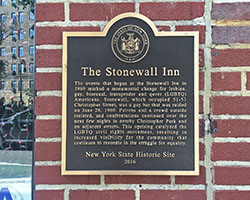
The Stonewall Riots in 1969 helped spark a global fight for LGBTQ+ rights. Transgender people led the riots, and continued organizing after they ended to take care of and fight for their community. Image by Grace.Mahony via Wikimedia Commons.
In the 1960s in the US, being homosexual was a crime. Wearing clothing of the opposite gender was a crime as well. Police constantly harassed, arrested, and even beat LGBTQ+ people just for being who they were. But on June 28, 1969, the community in New York City fought back.
That night, police raided the Stonewall Inn, one of the most popular gay bars in New York City at the time. The police arrested many patrons whose only crime was being gay or expressing themselves. After crowds witnessed police beating some community members, they erupted into a riot. They fought back against the police for six days straight. Their fight inspired activists across the world to fight harder to better the lives of all kinds of LGBTQ+ people.
Trans Trailblazers
Marsha P. Johnson and Sylvia Rivera were two transgender activists who helped lead the Stonewall Rebellion. In 1970, they founded an organization called STAR to support LGBTQ+ youth. At the time, transgender issues were often left out, even within the gay community. But Johnson and Rivera helped start a greater movement for trans recognition. Even after STAR disbanded, Johnson and Rivera both kept fighting for trans people and the rights of other LGBTQ+ people.
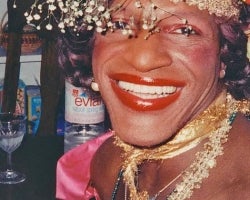
Marsha P. Johnson was one of the leaders of the Stonewall Riots. Those riots catalyzed a movement for LGBTQ+ rights that continues today. After the uprising, she went on to found organizations dedicated to helping the transgender community with the help of another transgender leader, Sylvia Rivera. Image by Petcor80 via Flickr.
Diversifying Gender
Transgender people began to gain more recognition in the 1990s. The transgender author Leslie Feinberg made the term more popular in her 1996 book Transgender Warriors. There, she broadly defined transgender as “people who cross the cultural boundaries of gender.”
Soon after, people began creating new words to describe their gender. In the 2000s, LGBTQ+ people began forming online communities. They created terms like non-binary, agender, and gender fluid.
As of 2023, there are at least 1.4 million gender-diverse adults in the US. That’s less than one percent of the population, but still more than ever before. Even so, gender-diverse people still aren’t completely accepted.
Most gender-diverse people have to face poverty, discrimination, or violence at some point in their lives. Additionally, many gender-diverse people still lose friends and family just because of who they are. Due to such difficulties, many gender-diverse people struggle with mental health issues. But it’s also much harder for gender-diverse people to access the healthcare they need. In 2021 alone, several US states passed laws banning transgender people from getting the healthcare that they need.
The Fight Continues
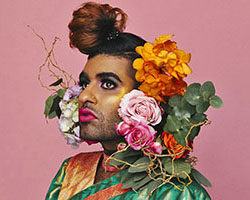
: Alok Vaid-Menon is a gender non-conforming author, performance artist, and activist. Through their art, they challenge the legitimacy of typical masculine and feminine gender roles. They encourage self-expression and finding beauty in one’s self and in others for more than just how well we conform to a certain gender. Image by Eivind Hansen.
Gender-diverse activists like AC Dumlao, Angelica Ross, and Alok Vaid-Menon continue to work for equality. Dumlao leads trans education workshops at the Transgender Legal Defense and Education fund. Ross is an actress and founder of TransTech Social Enterprises. Her organization works to train LGBTQ+ people to help them overcome poverty. Menon is an author who challenges typical gender roles through their poetry and book, Beyond the Gender Binary.
These are just a few of many gender-diverse activists around as of 2023. They work tirelessly to give all people the right to freely explore, choose, and express their gender identity.
Image of Lukas Avedaño by Mario Patinho via Wikimedia Commons.
This Embryo Tale was edited by Cole Nicols and is based on the following Embryo Project articles:
Drago, M. (2014, April 9). Hermaphrodites and the Medical Invention of Sex (1998), by Alice Domurat Dreger. Embryo Project Encyclopedia. ISSN: 1940-5030 http://embryo.asu.edu/handle/10776/7818.
Gaetano, P. (2017, November 15). David Reimer and John Money Gender Reassignment Controversy: The John/Joan Case. Embryo Project Encyclopedia. ISSN: 1940-5030 http://embryo.asu.edu/handle/10776/13009.
Schnebly, R.A. (2022, June 13). Biological Sex and Gender in the United States. Embryo Project Encyclopedia. ISSN: 1940-5030 http://embryo.asu.edu/handle/10776/13338.
Schnebly, R.A. (2021, July 16). Sex Determination in Humans. Embryo Project Encyclopedia. ISSN: 1940-5030 http://embryo.asu.edu/handle/10776/13286.
View Citation

Many cultures around the world have recognized genders beyond just "man" and "woman" through history. This is Lukas Avedaño, a muxe performance artist from a Zapotec community in Oaxaca, Mexico. Many Zapotec people recognize muxe as a third gender beyond man or woman.
Be Part of
Ask A Biologist
By volunteering, or simply sending us feedback on the site. Scientists, teachers, writers, illustrators, and translators are all important to the program. If you are interested in helping with the website we have a Volunteers page to get the process started.







